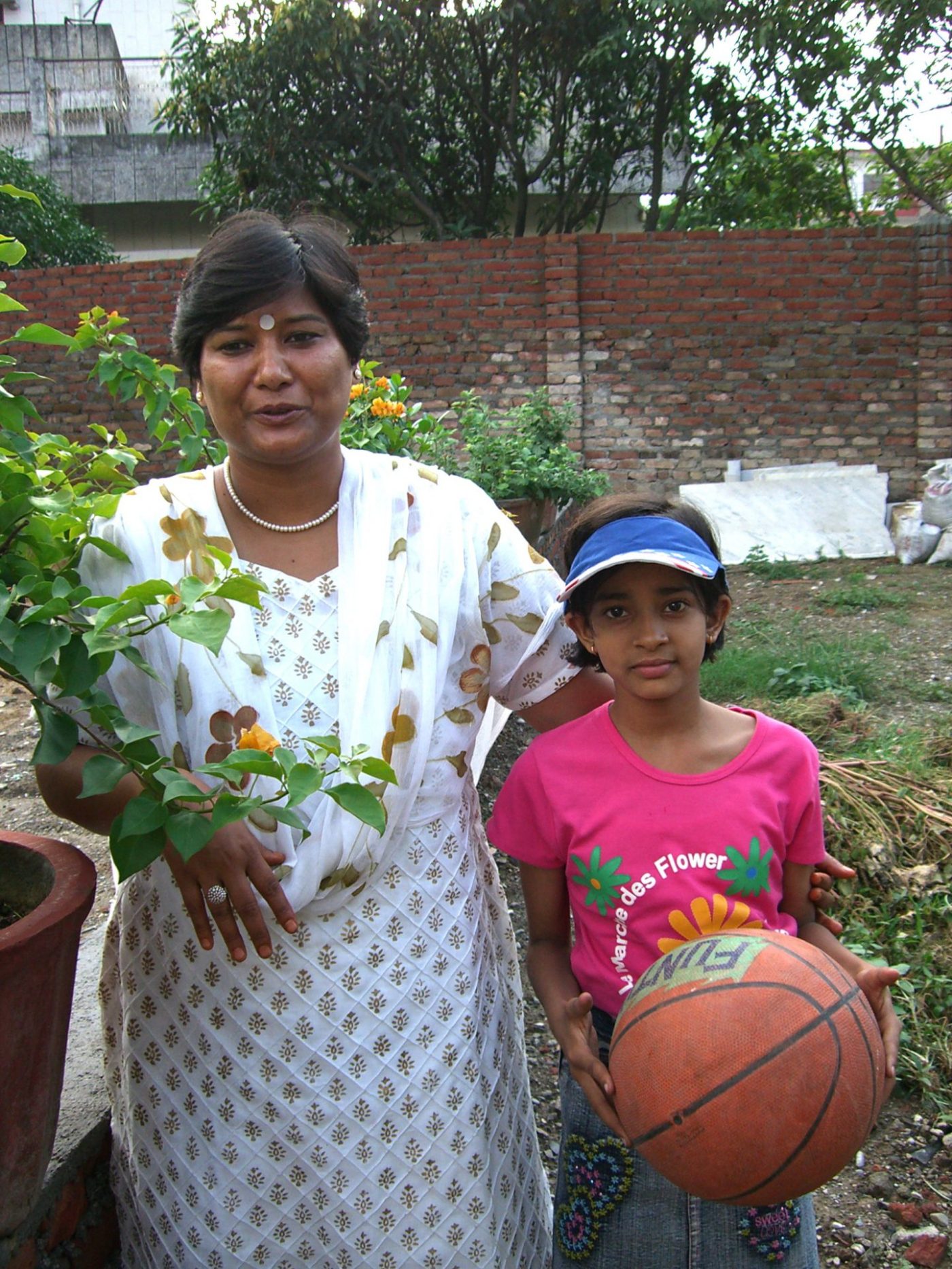Babita invited Anjula’s closest friends and their children to her house for a Saturday afternoon party that lasted into the evening. I learned a lot about clothing, running a household, food, entertaining Indian-style and the absolute loveliness and devotion Indian children show to adults.

Notice Babita has a white Bindi. Most married Hindu women sport a red one; it connotes love and prosperity and also protects a woman from anything evil. Babita’s white bindi could be a fashion statement—or more likely a political statement. To mobilize public opinion against child marriages, women wear a white bindi to express their support for “No Child Brides” campaign.

Their outfits women wear are shalwar kameez. The baggy pants are the shalwar–loose on top and tight around the ankle. (The one I bought tied together at the top with straps like those on a wrap-around skirt.) The top part of the woman’s outfit is a kameez. It’s a Western like dress, usually with fitted sleeves. Both Anjula and Babita’s lovely kameez are slit from waist to knee to allow freedom of movement. The scarf Indian women wear around their neck is called the dupatta. The dupatta is traditionally seen as a symbol of modesty (it hides the bustline) and can double as a veil, when needed. White is considered a symbol of the high caste.

Babita, Anjula, Shalini & Meena with the party dishes.
Many Hindus are vegetarian. No eggs, but they do eat yogurt and certain cheeses. They eat a lot of beans, legumes and dal. We also ate something called graham–which I can’t find on the internet. Every meal was accompanied by rice and yoghurt. Since we were in Dehradun for the party, we ate Dehradun Basmati, which is famous: the best basmati in the world. Everything–I mean absolutely everything– was dosed with turmeric. As you can see above, all the food, except rice, is yellow. When entertaining, it is classy to eat from glass plates and to drink water from thin elegant glasses. The everyday dishes and drinking glasses are often stainless steel.


I was tired and the girlfriends were chatting in Hindu, so Babita ushered me into the guest room to take a nap. It was the same kind of thin foam mattress on hard plywood platform, that I had grown accustomed to sleeping on in India.
One rule of etiquette in India? Don’t say please and thank you. For example, rather than saying thanks to Betina “For inviting me to your party.” It’s best too say, “I really enjoyed the food and spending time with you.”
“Please” is used infrequently in India, especially between friends and family. In Hindi, there are three levels of formality — intimate, familiar and polite — depending on the form that the verb takes. There is a word for “please” in Hindi (kripya) but it’s rarely used and implies doing a favor, again creating an excessive level of formality.


The maid walked around in socks to polish the floor while she moved in and out of the kitchen. She served the food and cleaned up the dishes.

Indian children love to play hard and to dance for adults. The six children at the party choreographed an energetic Indian hip-hop dance– with rolling eyes and swiveling wrists–for the adults. They performed before the second meal.It was amazing.
 They are so thirsty after playing outside
They are so thirsty after playing outside



Leave a comment